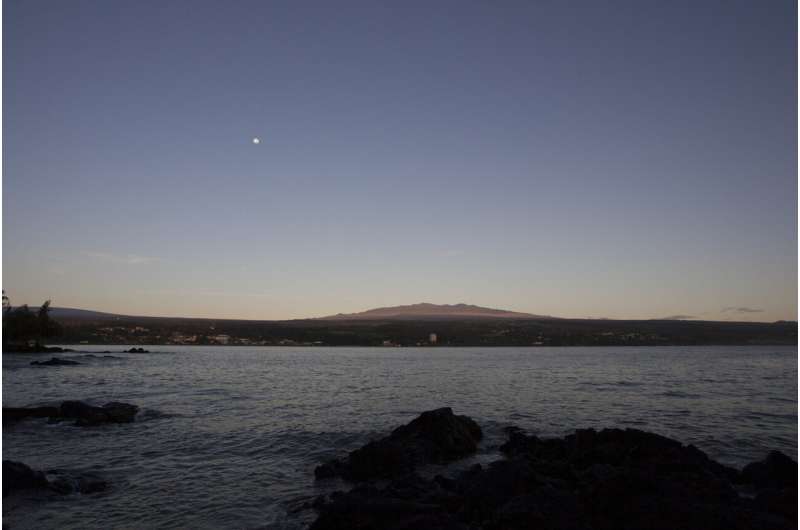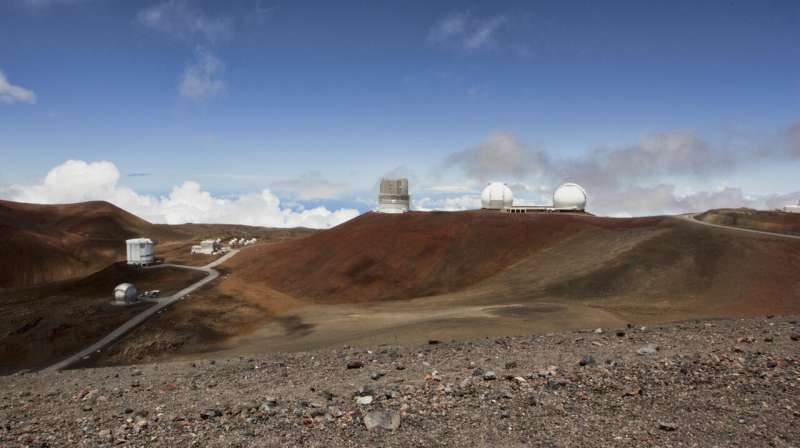The National Science Foundation said Tuesday it plans to conduct a study to evaluate the environmental effects of building one of the world's largest optical telescopes on sites selected in Hawaii and Spain's Canary Islands.
The agency published a notice in the Federal Register of its intentions to prepare an environmental impact statement for the $2.65 billion Thirty Meter Telescope.
The telescope's supporters have pursued plans to build it on their preferred site on the summit of Mauna Kea, Hawaii's tallest mountain and one of the world's best locations for viewing the night sky, for over a decade. But there is strong opposition from Native Hawaiians who consider the mountain's summit sacred.
The National Science Foundation plans to host four meetings on the Big Island of Hawaii in August. It said it won't decide on whether to fund the telescope until after it considers public input, the environmental review, the project's technical readiness and other factors.
Protesters blocked construction crews in 2015 and 2019, saying building a new telescope there would further defile a site that they say has already been harmed by a dozen other observatories.
The TMT International Observatory, the international consortium of scientists behind the project, has selected the Spanish island of La Palma off Africa's western coast as an alternate if it cannot build in Hawaii.
The group completed an environmental study in 2010 that was mandated by Hawaii law for construction on Mauna Kea.
The National Science Foundation must conduct a new study under U.S. law to invest in the project because it is part of the federal government.
A report from the U.S. astronomy community last year said TMT planned to obtain 30% of the project's estimated construction costs, or $800 million, from the U.S. government.
TMT is a partnership between the California Institute of Technology, the University of California and government-backed research institutions in Canada, China, India and Japan.

Robert P. Kirshner, TMT's executive director, said in an emailed statement that federal funding will provide the entire U.S. astronomy community with access to the observatory.
"This ensures that the TMT tests the best ideas and does the most important observations to contribute to understanding where we are in the universe and how it works," he said.
Telescope opponents criticized the new study, saying it will force them take time away from their lives again to give their views about the project, said Kealoha Pisciotta.
"Why don't people accept our 'no' for the answer?" said Pisciotta, who is a spokesperson for the groups Mauna Kea Hui and Mauna Kea Aina Hou that oppose the project.
In October, the U.S. astronomy community said in a report that the National Science Foundation should invest in at least one or two of a new class of observatories called Extremely Large Telescopes being planned by U.S. institutions.
TMT would cover the skies from the Northern Hemisphere. The Giant Magellan Telescope project, to be built in Chile, would observe the universe from the Southern Hemisphere.
U.S. astronomers included this recommendation in their once-in-a-decade analysis of their priorities and goals called the Pathways to Discovery in Astronomy and Astrophysics for the 2020s.
The report said the success of at least one of these two projects—TMT or Magellan—was a critical priority due to their "transformative scientific potential." It concluded that having at least one was "absolutely essential" for the U.S. to remain a leader in ground-based astronomy.
When the U.S. government invests in a telescope, U.S.-based astronomers get a share of the viewing time regardless of where in the world it is built.
The European Southern Observatory, which is run by 16 European nations and partners with Chile and Australia, has already started building its own Extremely Large Telescope in Chile. It's expected to start observations in 2027.
Explore further
© 2022 The Associated Press. All rights reserved. This material may not be published, broadcast, rewritten or redistributed without permission.



